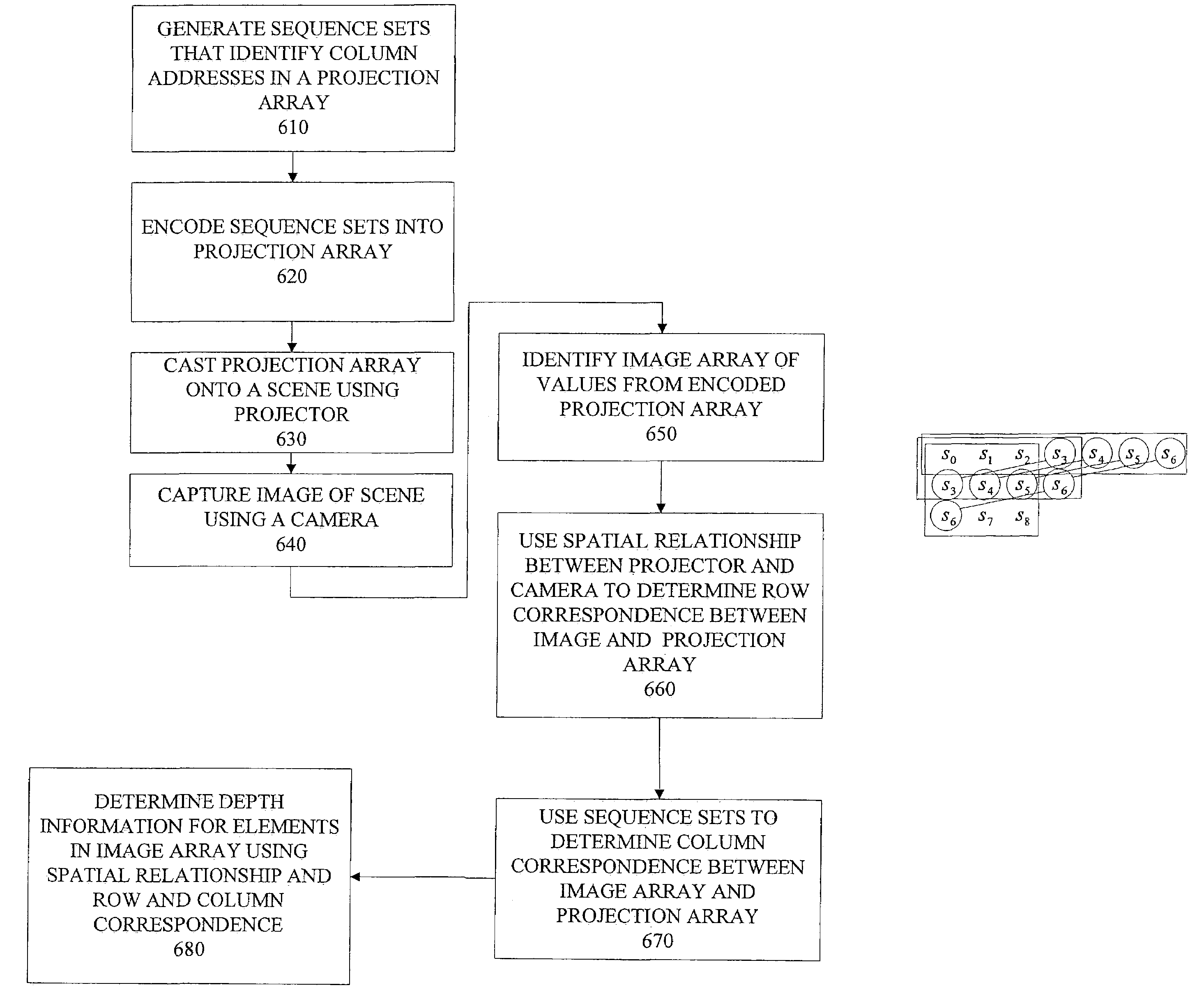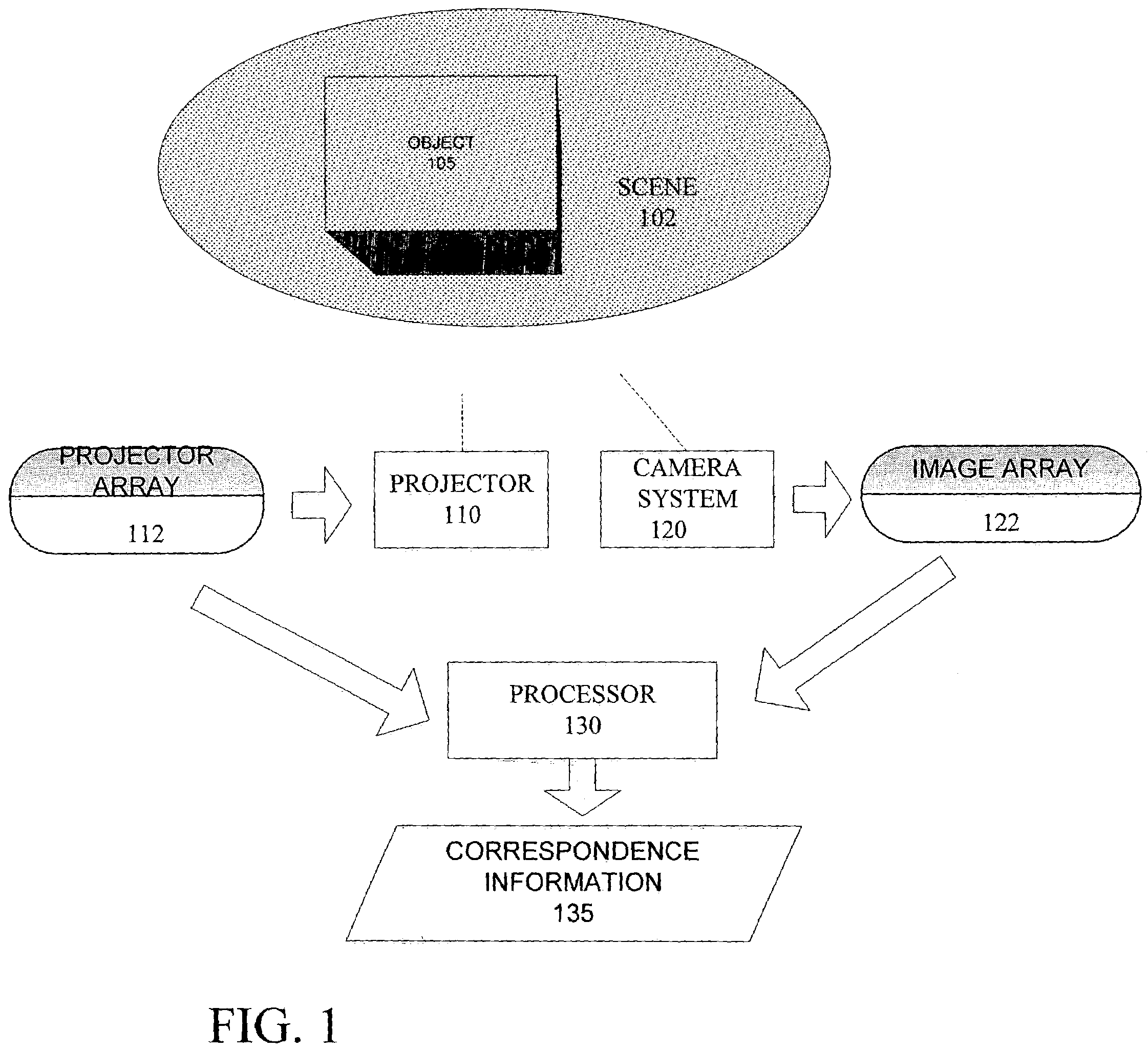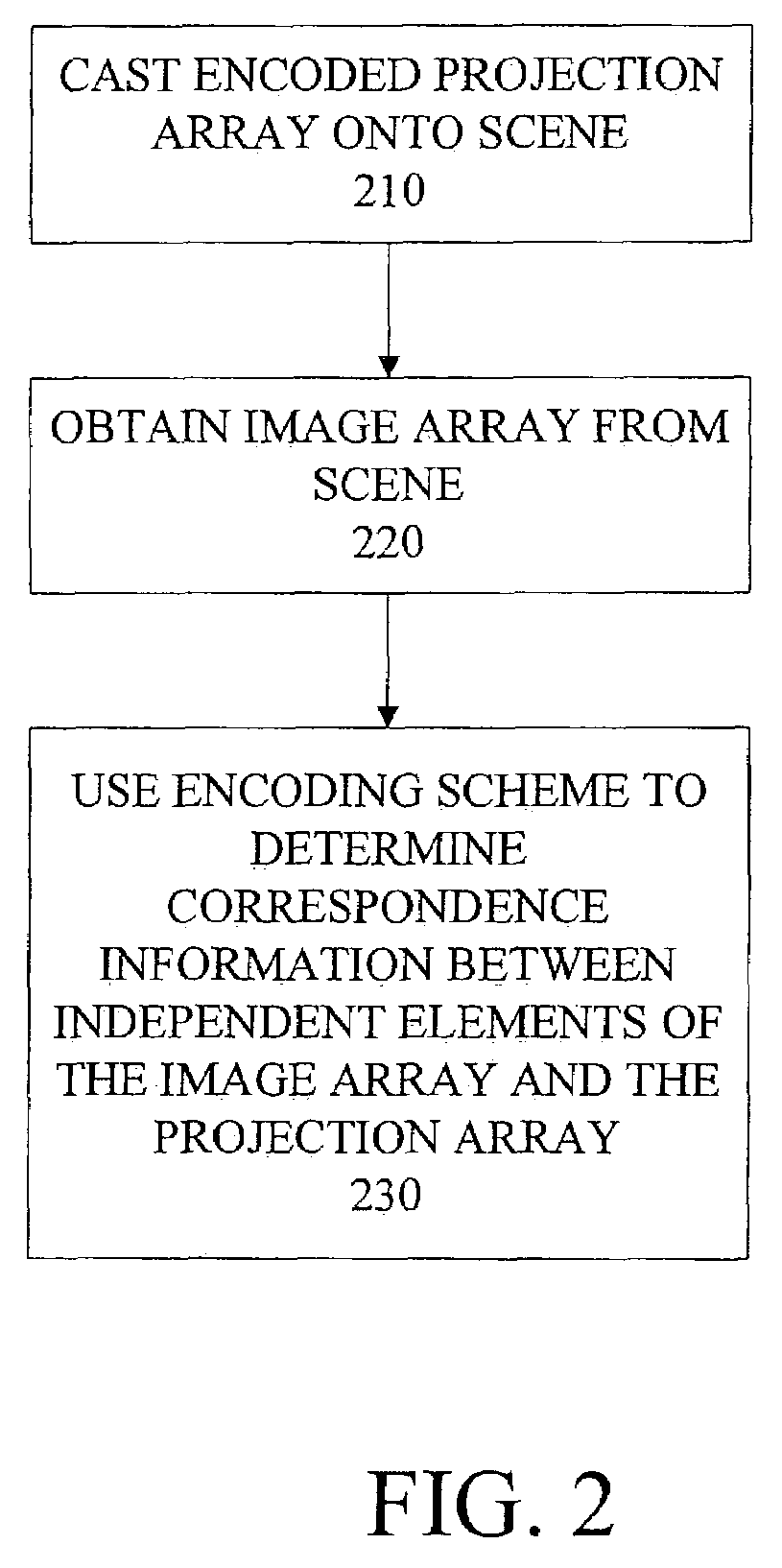Coded-array technique for obtaining depth and other position information of an observed object
a coded array and object technology, applied in the field of sensor systems, can solve the problems of requiring the projection of a moving beam or pattern of light, affecting the reliability of the apparatus, and requiring only one depth map of the scene over a period of tim
- Summary
- Abstract
- Description
- Claims
- Application Information
AI Technical Summary
Benefits of technology
Problems solved by technology
Method used
Image
Examples
Embodiment Construction
[0022]Embodiments of the invention describe a coded-array technique for obtaining depth and other position information for an observed object. In the following description, for the purposes of explanation, numerous specific details are set forth in order to provide a thorough understanding of the present invention. It will be apparent, however, that the present invention may be practiced without these specific details. In other instances, well-known structures and devices are shown in block diagram form in order to avoid unnecessarily obscuring the present invention.
[0023]Overview
[0024]Embodiments of the invention provide for determining information about discrete points on an observed object by analyzing an image of the object and referencing the image to known characteristics of light projected onto the object. In one embodiment, light is coded to provide discrete identifiable elements. The coded light is then projected onto an object or scene. A camera or similar sensing apparatu...
PUM
 Login to View More
Login to View More Abstract
Description
Claims
Application Information
 Login to View More
Login to View More - R&D
- Intellectual Property
- Life Sciences
- Materials
- Tech Scout
- Unparalleled Data Quality
- Higher Quality Content
- 60% Fewer Hallucinations
Browse by: Latest US Patents, China's latest patents, Technical Efficacy Thesaurus, Application Domain, Technology Topic, Popular Technical Reports.
© 2025 PatSnap. All rights reserved.Legal|Privacy policy|Modern Slavery Act Transparency Statement|Sitemap|About US| Contact US: help@patsnap.com



